Climates of India Class 7 Notes Social Science Chapter 3 Free PDF
Introduction
India’s climate is one of the most diverse and complex in the world. It is shaped by various factors that create different weather patterns across the vast country. In this chapter, we will explore why India’s climate varies, what monsoons are, how climate affects life and the economy, how it aids in disaster preparedness, and the impact of climate change.
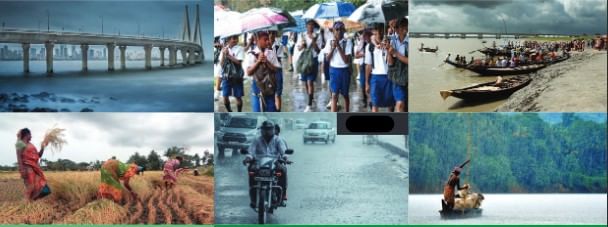 Diverse Climate
Diverse Climate
Weather, Seasons, and the Climate
Weather is the daily condition of the atmosphere, like rain, sunshine, or wind, and it changes often. Climate is the average weather pattern in an area over many years (decades). Seasons are periods in a year, like spring, summer, autumn, and winter, that repeat annually.
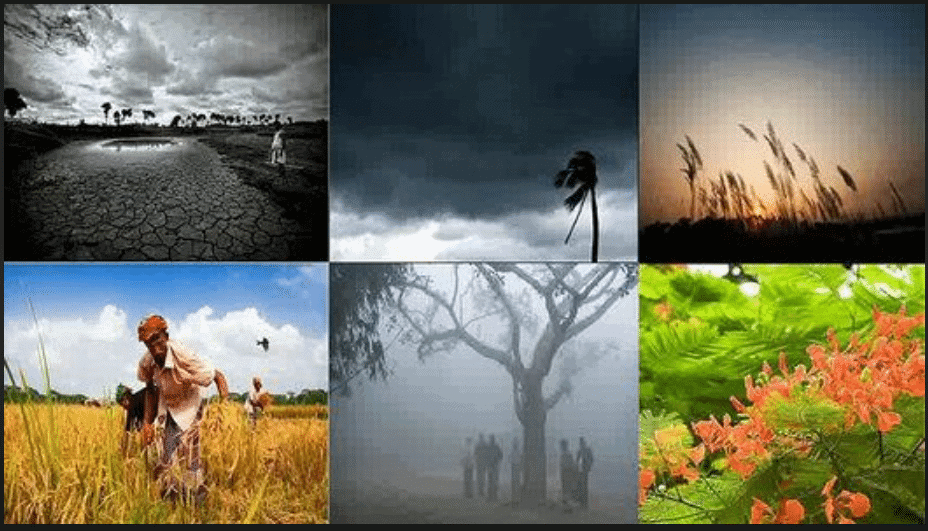 Weather of India
Weather of India
- Most parts of the world have four main seasons—spring, summer, autumn, and winter.
- In India, besides these, there is a special season called the monsoon or rainy season, making a total of five main seasons.
- Traditionally, India divides the year into six seasons or ritus: vasanta (spring), grishma (summer), varsha (rainy), sharad (autumn), hemanta (pre-winter), and shishir (winter).
- Each season has festivals, like Vasanta Panchami in spring or Sharad Purnima in autumn.
- The weather changes with each season—for instance, it is hot and dry in summer, and humid and rainy during the monsoon. The seasonal pattern in a region forms a key part of its climate.
- Plants, animals, and humans all adjust to these seasonal rhythms. Crops grow in specific seasons, many trees shed their leaves or change colors in autumn, and animals grow thick fur to survive the cold winter months.
While climate generally remains stable over long periods, scientists have noted changes in recent decades, with many of these changes caused by human activities.
Types of Climates in India
India is a land of diverse climates, varying greatly across different regions:
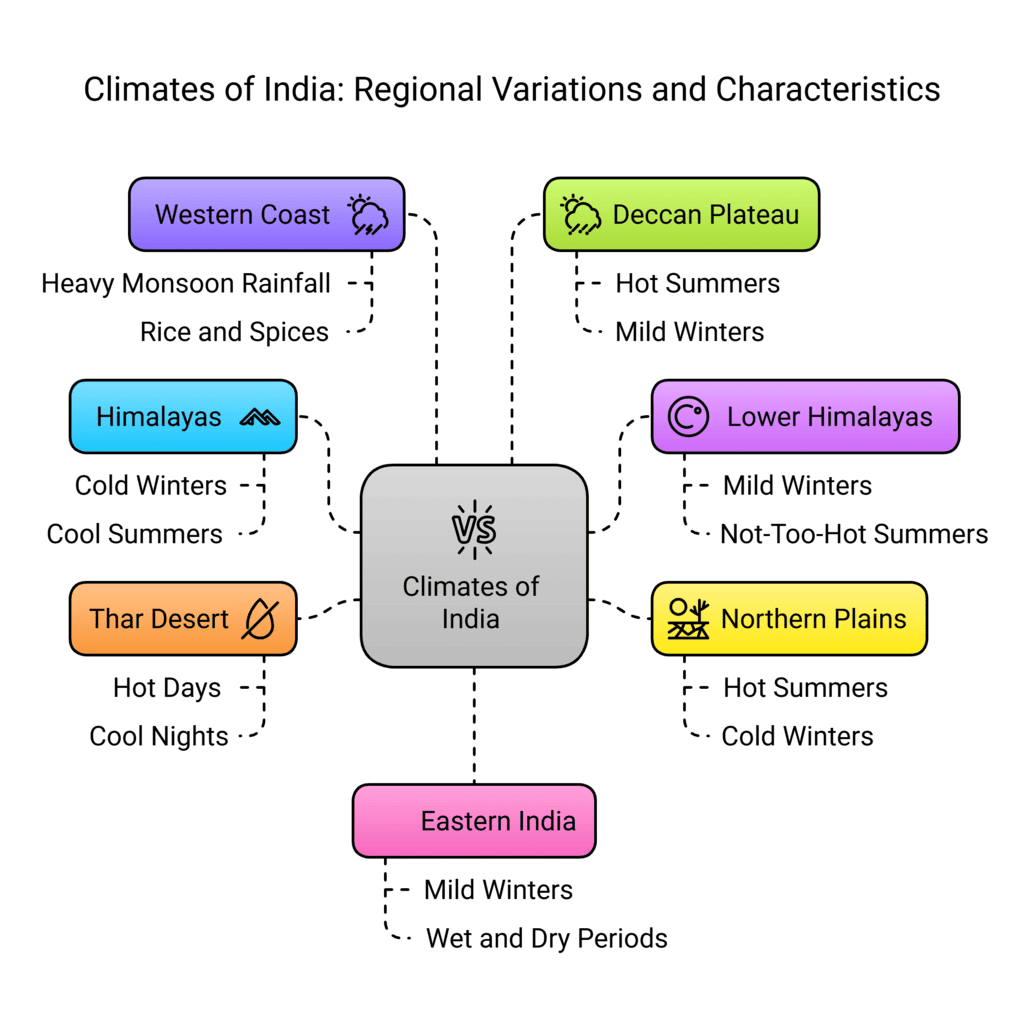
Himalayan Mountains (North):
- Have an alpine climate with cold, snowy winters and cool summers.
- The term “alpine” originates from the Alps mountains in Europe.
- This region requires the thickest clothing in India due to cold weather.
Lower Himalayas and Hill Areas:
- Experience a temperate climate with moderately cold winters and mild summers.
- Popular for many hill stations where people visit to escape the heat of the plains.
Northern Plains:
- Have a subtropical climate with very hot summers and cold winters.
- This region is the main area for growing wheat.
Thar Desert (West):
- Characterized by an arid climate with extremely hot days, cool nights, and very little rainfall.
- Inhabitants have developed unique methods to collect and conserve water.
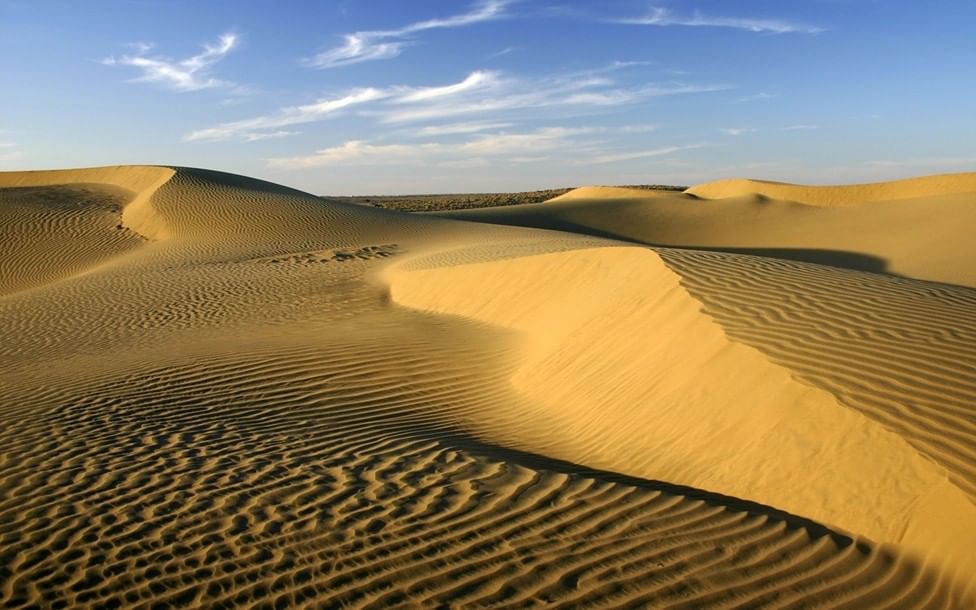 Thar DesertWestern Coastal Strip:
Thar DesertWestern Coastal Strip:
- Receives heavy rainfall during the monsoon months.
- Has a tropical wet climate that supports the cultivation of rice and spices.
Central Deccan Plateau:
Experiences a semi-arid climate with hot summers, mild winters, and moderate rainfall during the rainy season.
Eastern India and Southern Peninsula:
Experience a tropical climate with mild winters and distinct wet and dry periods controlled by monsoon winds.
Factors Determining the Climate
Several factors shape India’s climates, including global, regional, and local ones:
a) Latitude:- Latitude measures distance from the Equator. Near the Equator (low latitudes), it’s hot; near the poles (high latitudes), it’s cold.
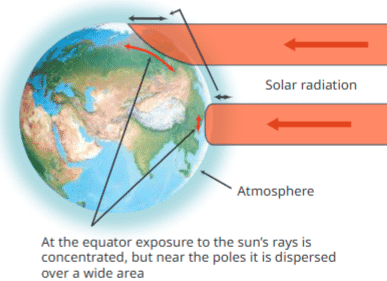 Effect of Latitude
Effect of Latitude
- At the Equator, the sun’s rays hit directly, focusing heat on a small area. At the poles, rays are slanted, spreading heat over a larger area and passing through more atmosphere, reducing heat.
- In India, Kanyakumari and Nicobar Islands (near Equator) are warm year-round, while Srinagar (farther north) is cooler.
- Higher places like hill stations (e.g., Ooty, Shimla) are cooler than lowlands.
- Temperature drops as altitude increases because air is less dense and farther from the Earth’s warm surface.
- Himalayan peaks are so high they stay below freezing, keeping snow year-round.
- Example: Ooty (10–25°C in summer) is cooler than Coimbatore (25–38°C) at the same latitude due to higher altitude.
- Coastal areas have milder temperatures because the sea keeps summers cooler and winters warmer.
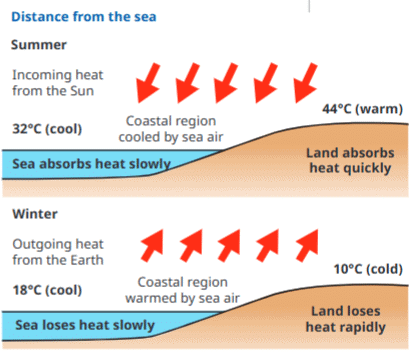 Distance from Sea
Distance from Sea
- Inland areas have extreme temperatures (hotter summers, colder winters).
- Example: Mumbai (coastal, 32°C summer, 18°C winter) has a smaller temperature range (14°C) than Nagpur (inland, 44°C summer, 10°C winter, 34°C range).
- Winds carry warm or cool air, affecting temperature and humidity.
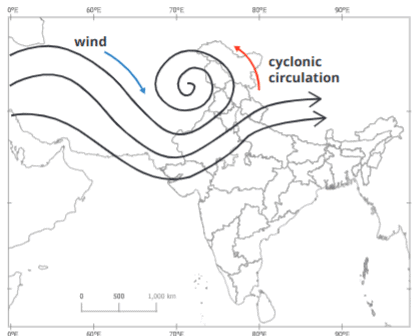 Winds
Winds
- Hot, dry winds from Arabian deserts cause heat waves in Punjab, Haryana, Rajasthan, and Madhya Pradesh in summer.
- Cold winds from the Himalayas bring cold waves to northern foothills in winter.
- Sea winds bring moisture, leading to rainfall.
- The shape of the land affects climate. The Himalayas and Karakoram block cold desert winds from Central Asia.
- The flat Thar Desert has no protection from hot, dry winds.
- The Western Ghats influence monsoon rainfall.
What is Microclimate?
- A small area’s climate that differs from the surrounding region.
- Examples: enclosed valleys, forests, or urban heat islands (cities with many buildings and little greenery that trap heat).
- Microclimates affect local plants, animals, crops, and human health.
The Monsoons
The monsoon season is vital for India, filling rivers, watering soil, and growing crops. The word “monsoon” comes from Arabic “mausim” (season) and refers to seasonal winds over the Indian Ocean and South Asia. Monsoons happen because land heats and cools faster than the ocean, creating pressure differences that drive winds.
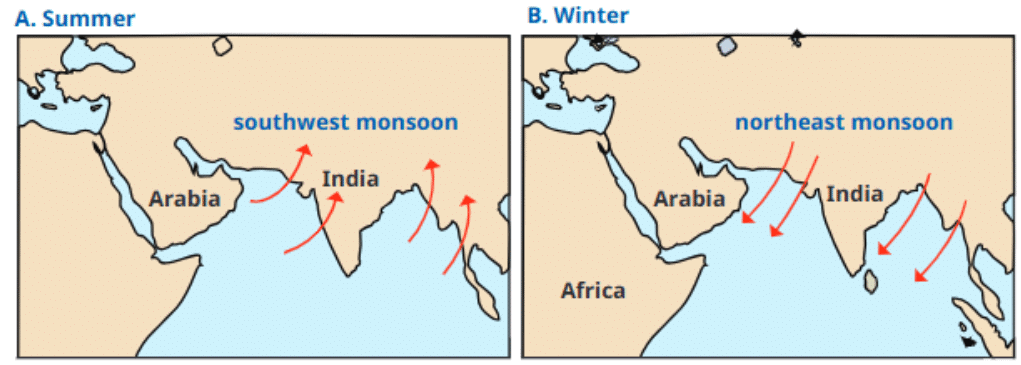 Monsoons
Monsoons
- In summer, the Asian landmass heats up, creating a low-pressure system.
- Cooler, high-pressure ocean air flows to the land, carrying moisture that falls as heavy rain.
- Starts in early June at India’s southern tip, reaching the whole country by mid-July.
- The Western Ghats block winds, causing heavy rain on their western slopes but less on the Deccan Plateau.
- In winter, the land cools faster, creating a high-pressure system, while the ocean stays warmer with lower pressure.
- Winds blow from land to sea, bringing dry weather to most of India.
- Some winds over the Bay of Bengal pick up moisture, causing rain in east and south India.
Some Interesting Facts on Monsoon in India
- Mawsynram in Meghalaya gets the world’s highest rainfall, about 11,000 mm yearly.
- Monsoon rains have inspired many ragas in both Carnatic and Hindustani classical music. Meghamalhar and Amruthavarshini are two such ragas .
- Traditional knowledge predicts monsoons, e.g., fish surfacing on the Konkan coast or Golden Shower trees (Cassia fistula) blooming 50 days before rain.
Climate and Our Lives
Climate shapes our culture, economy, and daily life. Many Indian festivals, like Baisakhi and Onam, are tied to seasons and farming, celebrating harvests or rain.
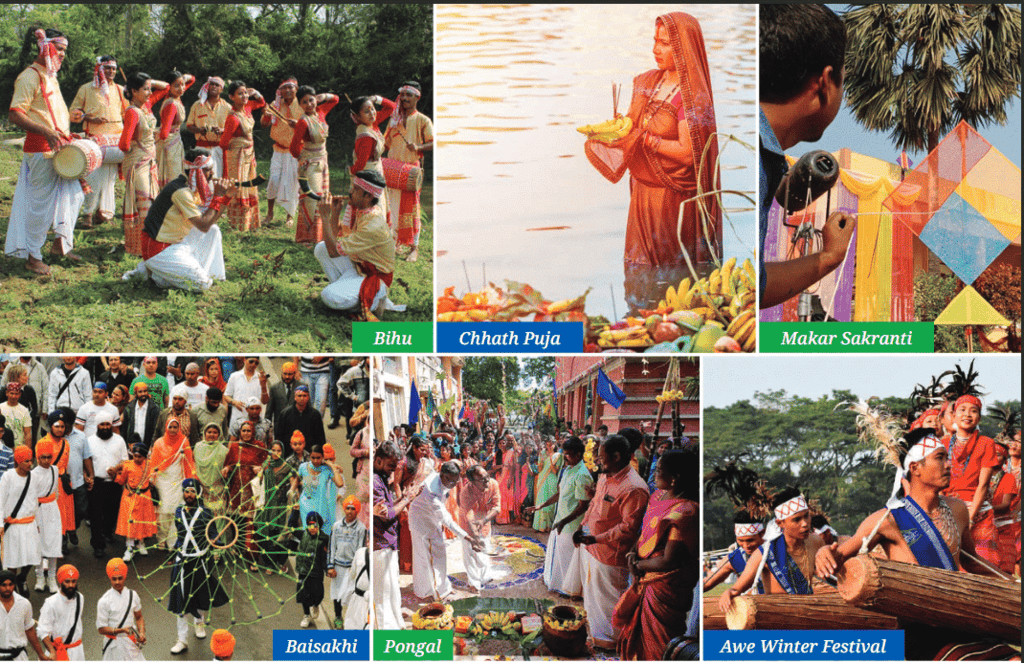 Harvest Festivals of India
Harvest Festivals of India
- A monsoon failure (poor rainfall) hurts farming, reduces food supply, raises prices, and forces workers to move to cities.
- Industries need predictable weather and water to function.
- Traditional dances, songs, and rituals are linked to seasons and rain, passed down by elders.
Climates and Disasters
India’s diverse climates can cause extreme weather, leading to natural disasters like cyclones, floods, landslides, and forest fires.
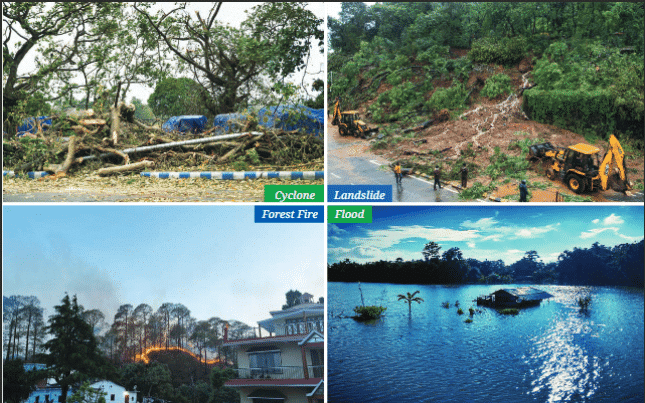 Disasters
Disasters
- Common on the eastern coast, caused by intense low-pressure systems over the sea.
- Moist sea air forms clouds that rotate around a calm centre called the eye of the cyclone.
Some cyclones in the past have been very dangerous. They have caused loss of human and animal lives, broken houses, damaged roads and buildings, uprooted trees, and washed away soil.
- The India Meteorological Department (IMD) tracks cyclones to give important information about when and where a cyclone is forming, how strong it is, and where it might hit land.
- The National Disaster Response Force (NDRF) is specially trained to respond to natural as well as human-made disasters. NDRF battalions are located at 12 different locations in India.
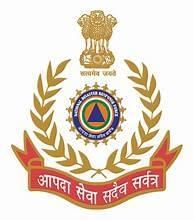
A flood happens when water spreads over land that is usually dry.
This can happen due to heavy rainfall, which creates more water than the ground can absorb.
Sometimes rivers and lakes collect too much water and overflow, or their banks break, causing floods.
Floods are very common during the monsoon season in India.
States like Uttar Pradesh, Bihar, Kerala, Andhra Pradesh, and Assam are often affected by floods every year.
In mountain areas, especially the Himalayas, floods can happen when glacial lakes overflow.
i) These lakes are held back by rocks and ice and filled with water from melting glaciers.
ii) When glaciers melt too quickly or there is a lot of rain, too much water builds up.
iii) This extra pressure can break the barrier, causing a glacial burst, which can damage homes and harm people.In cities, flooding happens when too much rainwater cannot drain away properly.
i) Sometimes drains are too full or blocked.
ii) Also, buildings and roads are built on water paths, stopping water from flowing away.
iii) Roads made of cement or tar do not let water soak into the soil, so the water stays on the surface, causing floods.
In 2013, Uttarakhand’s Kedarnath floods from a glacial burst killed about 6,000 people and destroyed villages.
c) Landslides:- Sudden collapse of rock or soil in hilly areas like Himachal Pradesh, Uttarakhand, Sikkim, Arunachal Pradesh, and the Western Ghats.
- Triggered by heavy rain, earthquakes, or human activities like deforestation or poor construction.
- Uncontrolled fires in forests or grasslands, common in Uttarakhand, Himachal Pradesh, Madhya Pradesh, Chhattisgarh, and the Western Ghats.
- Caused by dry weather, droughts, high winds, or human carelessness.
- They destroy forests, harm wildlife, pollute air, and displace people.
- Forest fires cause both environmental damage and economic loss.Question for Chapter Notes: Climates of IndiaTry yourself:What common natural disaster is caused by intense low-pressure systems over the sea?View Solution
Climate Change
Climate change is a long-term shift in climate patterns, like changes in temperature or rainfall. In the past, it was caused by natural processes, but since the 19th century, human activities drive it.
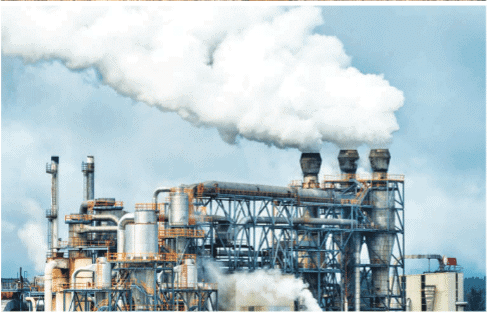 Pollution
Pollution
- Burning fossil fuels (coal, oil, gas) releases greenhouse gases like carbon dioxide (CO₂).
- Deforestation removes trees that absorb CO₂.
- Harmful industrial practices and wasteful consumption.
Effect of Greenhouse gases:
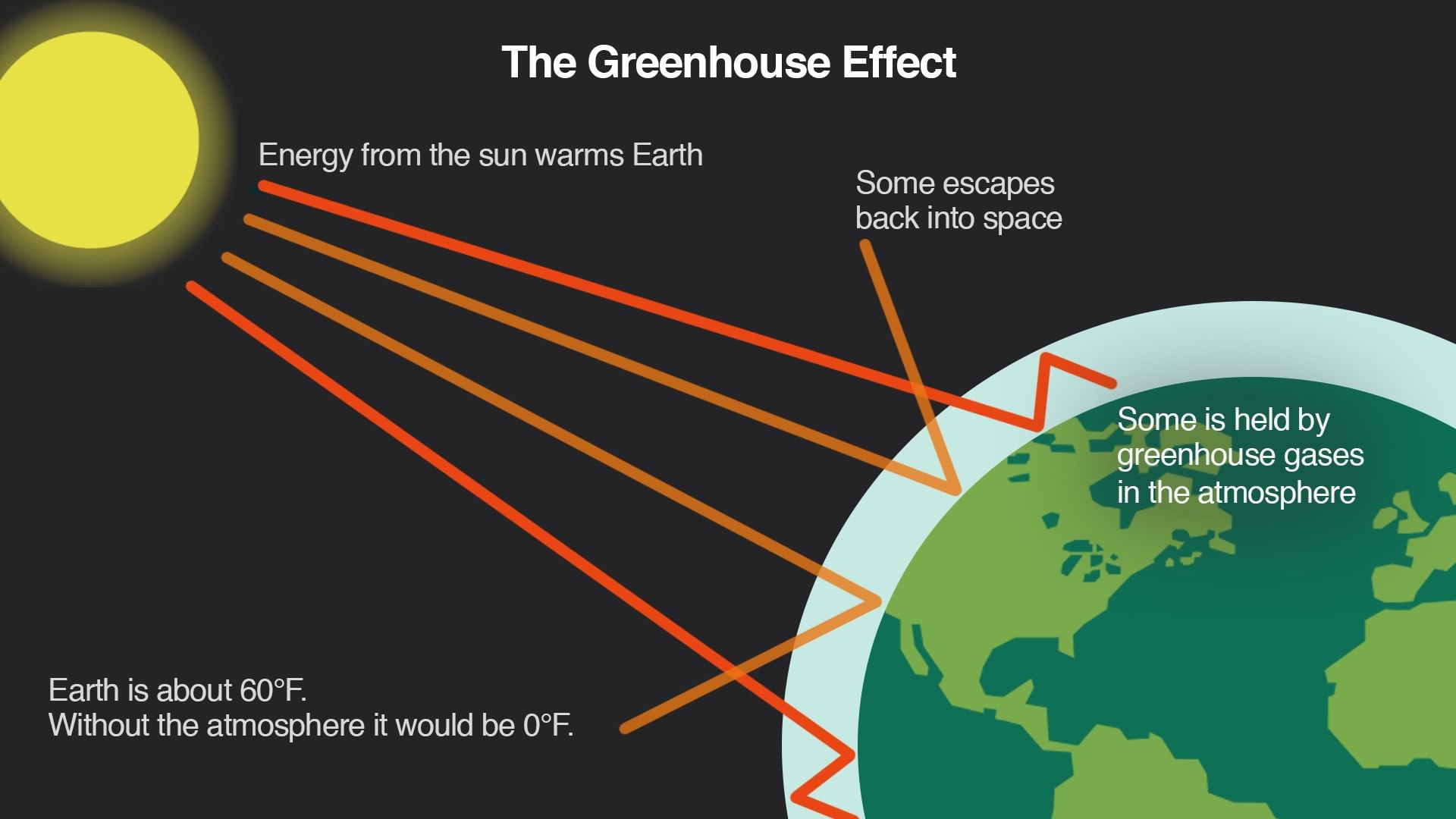 Effect of Greenhouse gases
Effect of Greenhouse gases
- Greenhouse gases trap heat, causing global warming, which disrupts climate patterns.
- In India, temperatures rose 1–3°C above normal in early 2025, shortening winter and affecting farming and small industries.
- Consequences include more extreme weather, crop failures, and challenges for communities.
Rising Temperatures in India
In early 2025, temperatures in many parts of India were 1 to 3°C higher than normal.
Because of this, winter became shorter and warmer.
This change affected farming (as some crops need cool weather) and small industries that depend on seasonal changes.
This is just one example of how climate change can create problems for people and the economy.
What can we do?
- By understanding the causes of climate change, we can be better prepared for natural disasters like floods, droughts, and heatwaves.
- It also helps us know why we need to protect the environment.
- The Indian government and other countries are trying to:
i) Reduce pollution and greenhouse gas emissions
ii) Plant more trees
iii) Use clean energy like solar and wind
iv) Promote energy-saving and eco-friendly habits - But sometimes these helpful actions clash with the need for more factories, jobs, and development, making it a challenge to balance both.
Points to Remember
- India’s diverse climate is shaped by its geography, including mountains, deserts, and plateaus.
- Weather changes daily, seasons repeat yearly, and climate is a long-term pattern.
- Factors like latitude, altitude, proximity to the sea, winds, and topography determine climate.
- Monsoons are crucial for farming, bringing rain in summer and in some areas during winter.
- Climate affects culture, festivals, farming, and the economy.
- Understanding climate helps prepare for natural disasters like cyclones, floods, landslides, and forest fires.
- Climate change is causing extreme weather and is driven by human actions, like burning fossil fuels.
Difficult Words
- Climate: The average weather pattern in an area over many years.
- Seasons: Periods in a year, like summer or winter, that repeat annually.
- Monsoon: Seasonal winds that bring heavy rain, especially in summer.
- Latitude: Distance from the Equator, affecting how hot or cold a place is.
- Altitude: Height above sea level, making higher places cooler.
- Topography: The shape and features of the land, like mountains or plains.
- Microclimate: A small area’s unique climate, different from nearby areas.
- Cyclone: A storm with strong winds and rain caused by a low-pressure system.
- Flood: Water overflowing onto dry land, often from heavy rain.
- Landslide: Sudden collapse of rock or soil in hilly areas.
- Forest Fire: Uncontrolled fire in forests or grasslands.
- Climate Change: Long-term shifts in climate patterns, often caused by human actions.
- Fossil Fuels: Fossil fuels are energy sources like coal, oil, and natural gas formed from the remains of plants and animals buried millions of years ago under heat and pressure.
- Greenhouse Gases: Gases like CO₂ that trap heat, causing global warming.
- Resilience: The ability to recover quickly from difficulties or challenges.
- Mitigation: Taking steps to slow down global warming and reduce the causes of climate change.
- Sustainable: Capable of being maintained or continued over a long period without harm.
|
23 videos|274 docs|12 tests
|
FAQs on Climates of India Class 7 Notes Social Science Chapter 3 Free PDF
| 1. What are the different types of climates found in India? |  |
| 2. How do monsoons affect the climate in India? |  |
| 3. What factors determine the climate of a region in India? |  |
| 4. How does climate change impact India? |  |
| 5. How do climates lead to natural disasters in India? |  |

















